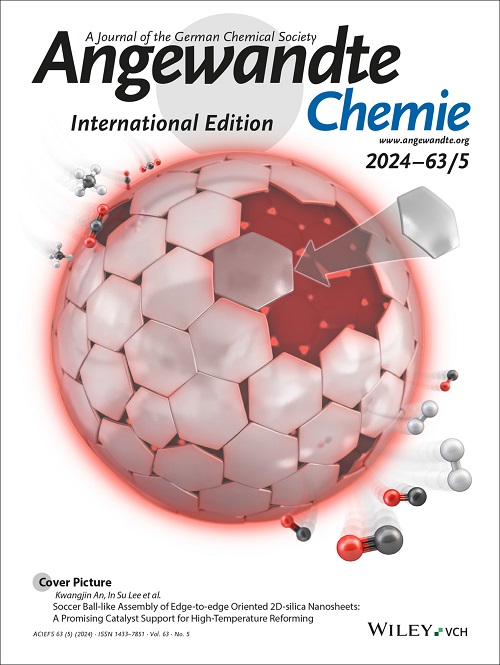Stimuli-Responsive Equilibrium in N-Heterocyclic Carbene-Supported Transition Metal Complexes: Selective Isolation of Multinuclear Species
IF 16.1
1区 化学
Q1 CHEMISTRY, MULTIDISCIPLINARY
引用次数: 0
Abstract
The AgI-N-heterocyclic carbene (NHC) complexes (3a,b) derived from a bis(NHC) ligand 1, which exhibit a temperature- and concentration-dependent equilibrium between the trinuclear and tetranuclear forms has been successfully isolated, that is slow on NMR time scale. Intriguingly, by freezing this slow equilibrium, facilitated by strong and stable H-bonding, we could achieve selective isolation of the tetranuclear species (3a,b-II). On the other hand, encapsulation of an anionic guest, ClO4, led to exclusive formation of the guest encapsulated trinuclear AgI-NHC complex, 3a-I. This is unprecedented and marks the first instance where selective isolation of both the species involved in an equilibrium using a C-donor ligand could be attained. In contrast, distinct behavior was observed with the AuI-ion, possessing the same linear geometry however with stronger M-CNHC bonds. In this context, a stable non-exchangeable ≈ 1:1 mixture (4a,b) of the tri- and tetranuclear AuI-NHC complexes were obtained via transmetalation of both the equilibrating (3a,b) and the H-bonded tetranuclear AgI-NHC complexes (3a,b-II). Moreover, by aptly adjusting the reaction parameters of transmetalation process, the trinuclear AuI-NHC complex (4a,b-I) could indeed be obtained selectively. Overall, this study highlights a pioneering approach for the control of an equilibrium between different nuclearity metallo-supramolecular species engaging C-donor ligands.求助全文
约1分钟内获得全文
求助全文
来源期刊
CiteScore
26.60
自引率
6.60%
发文量
3549
审稿时长
1.5 months
期刊介绍:
Angewandte Chemie, a journal of the German Chemical Society (GDCh), maintains a leading position among scholarly journals in general chemistry with an impressive Impact Factor of 16.6 (2022 Journal Citation Reports, Clarivate, 2023). Published weekly in a reader-friendly format, it features new articles almost every day. Established in 1887, Angewandte Chemie is a prominent chemistry journal, offering a dynamic blend of Review-type articles, Highlights, Communications, and Research Articles on a weekly basis, making it unique in the field.

 求助内容:
求助内容: 应助结果提醒方式:
应助结果提醒方式:


